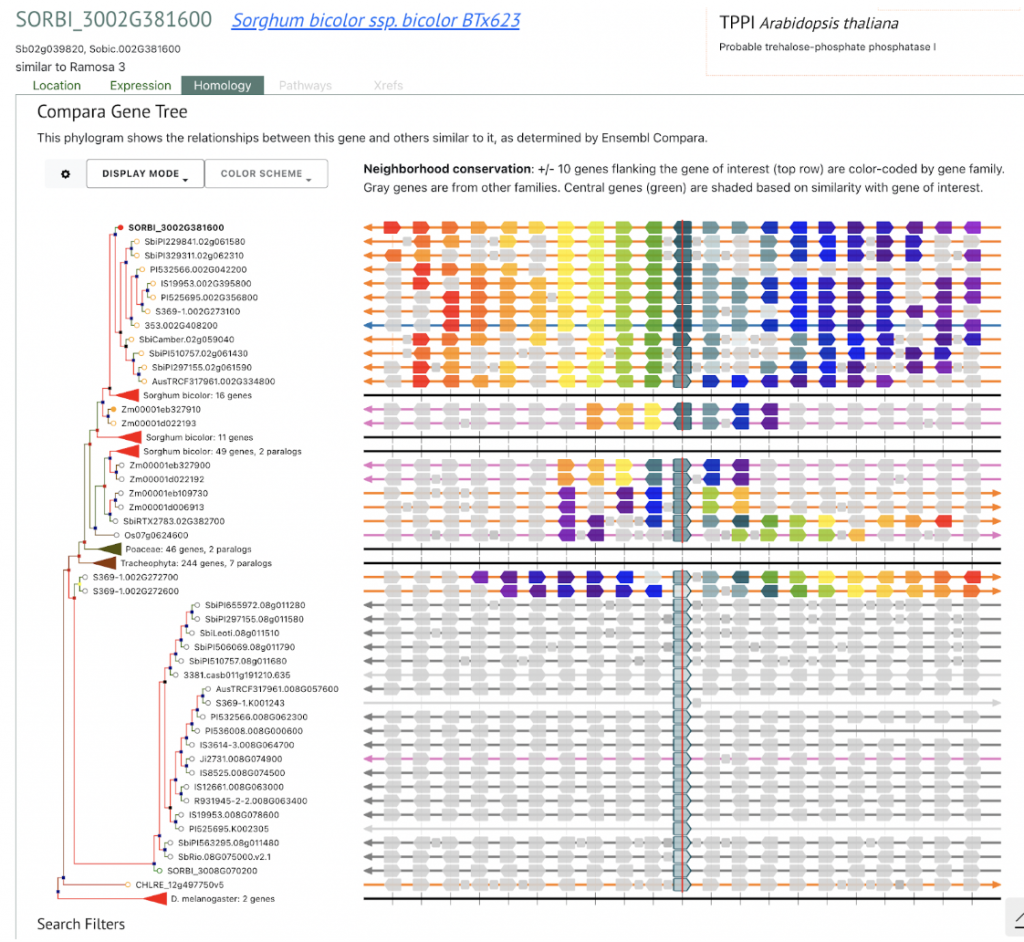Review of the Current Research and Future Avenues for Discovery into C4 Plants
Trehalose is a non-reducing disaccharide that, although not found in vertebrates, is commonly found in other groups in nature. In plants, trehalose 6-phosphate (Tre6P) acts as an intermediate in the synthesis of trehalose as well as being an important signal metabolite. Studies in the function of this compound in Arabidopsis thaliana, a C3 plant, have largely formed the basis of the present knowledge on the subject. There is a need for better understanding of the molecular mechanisms involved in Tre6P regulation of carbon partitioning and metabolism in C4 plants. Scientists from the Instituto de Agrobiotecnología del Litoral (UNL-CONICET) in Argentina reviewed the most recent investigation into Tre6P in C4 plants and discussed potential questions that need to be answered as researchers apply knowledge they gained in model plants to economically important crops like such as maize, sorghum and sugarcane. There has been some research into Tre6P metabolism in C4 plants (Henry et al., 2014; Henry et al., 2020; Satoh-Nagasawa et al., 2006; Claeys et al., 2019; Oszvald et al., 2018). In the genome sequencing of 75 wild, landrace and improved maize lines, scientists found that some Tre6P synthase (TPS) and Tre6P phosphatase (TPP) genes were selected for during domestication. Additional investigation is needed into the role of these genes in C4 species. The authors speculate that the anatomical and biochemical differences between C3 and C4 plants may indicate significant differences in the targets of Tre6P signaling as well. They suggest specific avenues for research into Tre6P in C4 species with the ultimate being to increase grain yield. Fully understanding Tre6P metabolism in C4 plant leaves will be extremely difficult because C4 plants are so complex. However, the benefits of such efforts include the generation of genetically engineered plants which in turn would result in a higher rate of food production, something that will become crucial as the human population continues to increase over the next thirty years.
SorghumBase examples:


References
Claeys H, Vi SL, Xu X, Satoh-Nagasawa N, Eveland AL, Goldshmidt A, Feil R, Beggs GA, Sakai H, Brennan RG, Lunn JE, Jackson D. Control of meristem determinacy by trehalose 6-phosphate phosphatases is uncoupled from enzymatic activity. Nat Plants. 2019 Apr;5(4):352-357. PMID: 30936436. DOI: 10.1038/s41477-019-0394-z.
Henry C, Bledsoe SW, Siekman A, Kollman A, Waters BM, Feil R, Stitt M, Lagrimini LM. The trehalose pathway in maize: conservation and gene regulation in response to the diurnal cycle and extended darkness. J Exp Bot. 2014 Nov;65(20):5959-73. PMID: 25271261. DOI: 10.1093/jxb/eru335.
Henry C, Watson-Lazowski A, Oszvald M, Griffiths C, Paul MJ, Furbank RT, Ghannoum O. Sugar sensing responses to low and high light in leaves of the C4 model grass Setaria viridis. J Exp Bot. 2020 Jan 23;71(3):1039-1052. PMID: 31677263. DOI: 10.1093/jxb/erz495.
Oszvald M, Primavesi LF, Griffiths CA, Cohn J, Basu SS, Nuccio ML, Paul MJ. Trehalose 6-Phosphate Regulates Photosynthesis and Assimilate Partitioning in Reproductive Tissue. Plant Physiol. 2018 Apr;176(4):2623-2638. PMID: 29437777. DOI: 10.1104/pp.17.01673.
Rojas BE, Tonetti T, Figueroa CM. Trehalose 6-phosphate metabolism in C4 species. Curr Opin Plant Biol. 2023 Feb 15;72:102347. PMID: 36806837. DOI: 10.1016/j.pbi.2023.102347. Read more
Satoh-Nagasawa N, Nagasawa N, Malcomber S, Sakai H, Jackson D. A trehalose metabolic enzyme controls inflorescence architecture in maize. Nature. 2006 May 11;441(7090):227-30. PMID: 16688177. DOI: 10.1038/nature04725.
Related Project Websites:
Figueroa Group: https://www.latam.mpg.de/4789/grupo-figueroa
CONICET: https://ial.conicet.gov.ar/?lan=en


